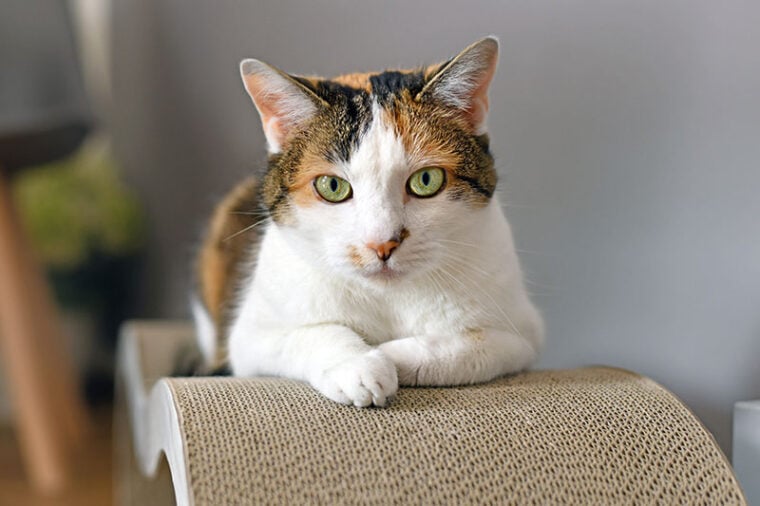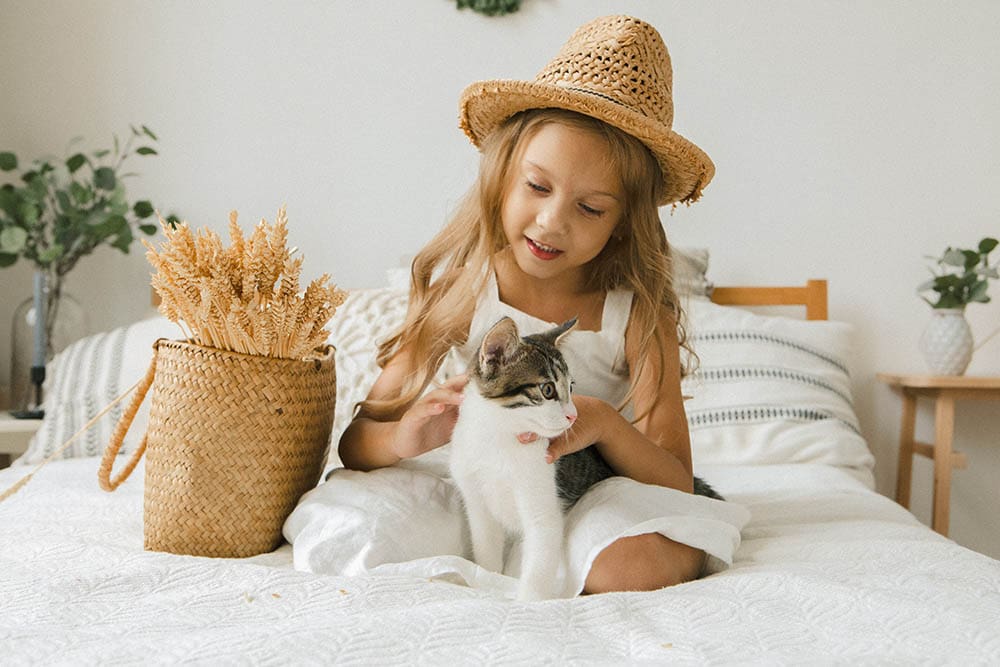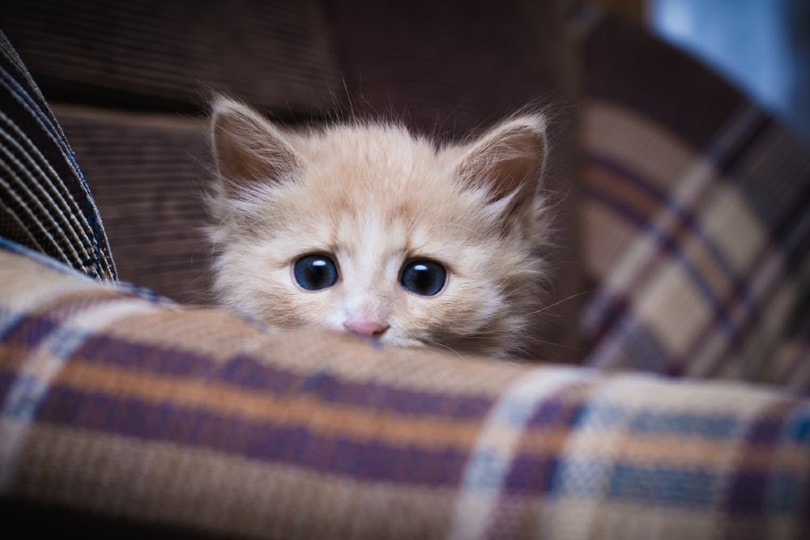
Click to Skip Ahead
As a cat owner, you like to think that your cat is happy to see you when you come home and gets a bit sad when they see you walk out the door for work in the mornings. After all, no cat parent wants to think that their beloved feline doesn’t care whether they are there or not.
So, you may be wondering, do cats have emotions? Yes, there is science-backed evidence that your furry friend feels at least six emotions.1 Which emotions are these? Do they miss us when we’re gone? We’ll answer these questions and more for you below.
Which Emotions Do Cats Have?
With these emotions, it is highly possible that your cat feels sad when you’re gone and happy when you walk back in the door. Cats were once thought to be illusive, self-centered creatures that preferred to be on their own most of the time. We now know that that isn’t exactly true. Think back to your cat’s behavior in the past. You’ve probably noticed all of the above emotions in your cat at one time or another.
When cats participated in emotion studies, the following complex emotions were noticed rarely, if at all.
This doesn’t mean that your cat doesn’t know when it has done something wrong; it just means they’re not ashamed of it.
Can Cats Truly Bond with Their Owners?
As a cat parent, you probably already know the answer to this question. Cats usually pick a human in the household to bond with. While this has been proven in many ways, it’s also been proven that cats react in different ways when their owners are laughing or even upset.
For example, when you’re happy and smiling, your cat is more apt to rub against you and purr. However, if you’re in a bad mood and frowning, your cat is more inclined to avoid you.

 The 3 Main Cat Emotions
The 3 Main Cat Emotions
While there’s no exact science behind it, humans can read their cat’s emotions if they know the signs to look for. If you’re struggling to understand how your cat is feeling, check out the guide below to help you interpret your cat’s emotions.
1. Anger
When a cat is angry, it’s pretty easy to tell. The cat will flatten its ears against its head, and its fur will usually stand straight up. It may have its tail twitching and thrashing left and right at a fast pace, which increases the angrier the cat gets. In many cases, the cat will hiss, growl, and arch its back.
These are clear signs that the cat is angry about something and needs to be left alone.
2. Fear
You’ll most likely see the same signs in fearful cats, with a few extras. A cat that’s afraid usually tries to run away and hide. If it can’t do either of these things, it might become aggressive to protect itself from the perceived threat. The cat may also walk slowly away with its back flat and tail and head close to the floor. It’s best to let your cat go if this happens. Give the cat time to calm down, then check on it later.

3. Happiness
Like humans, cats show their happiness in several ways. Humans display joy with their speech and facial expressions in most cases, but felines use body language to show they are happy. They may purr or knead a soft spot, such as your lap or the blankets on the couch. When lying down, they might keep their eyes half-closed and roll over so you can see their tummy.
If you see your cat’s tail curled at the tip and its ears in a natural position, it’s probably happy. Happy cats will come to you for affection, and they also tend to have great appetites.
We all want our cats to be happy and loving, but that’s not always the case. Remember, cats like to be alone at times, just like humans do. So, if your cat doesn’t seem upset but seems aloof, it probably means it doesn’t want to be petted or played with.
 Can Cats Get Their Feelings Hurt?
Can Cats Get Their Feelings Hurt?
We know that cats have certain emotions and feelings, but sometimes your cat acts like you’ve offended them. Cats can get their feelings hurt; some pets can become sad or depressed, especially if their owner passes away.
Of course, some cats show that their feelings are hurt more than others. Cats that are depressed tend to lie around, lose their appetite, and not want to play. If you notice that your cat seems depressed or sad, it’s best to take it to the vet for diagnosis and treatment. Your vet will rule out a medical problem and then work on getting your cat into the happy spirits you’re used to.

Do Cats Recognize Human Emotions?
Research has shown that cats can recognize human emotions. Studies showed that cats could recognize not only human emotions but also the positive and negative emotions in other cats. You’ve probably noticed that when you’re upset, your cat can tell, and when you’re happy or excited, your cat is too.
Cats are complex creatures that scientists and feline behaviorists are working hard to understand. What is known now is that your furry friend isn’t just there to have a place to rest and eat. Your furry pal has emotions and understands some of yours, just not in the same way humans do. Instead, your cat uses physical and auditory cues to help them determine which emotions you’re feeling.
This can also be a defense mechanism in a cat that has been abused in the past so that they know to get out of the way of an owner that may be angry. In most cases, it’s just a way for your pet to know it’s time to be petted, cuddled, and pampered by the human it’s come to adore.
 Wrap Up
Wrap Up
It’s now known that cats can feel emotions such as sadness, disgust, fear, anger, surprise, and happiness. Cats can recognize emotions in their pet parents and other cats. They tend to form strong bonds with their owners and will let you know if they are happy or unhappy. If you’re scratching your head regarding your cat’s emotions, try following the tips above for recognizing their body language, so you’ll know what kind of mood your cat is in.
Remember, your cat can have its feelings hurt, so be nice, loving, and patient with your feline for the best results.
Featured Image Credit: Firn, Shutterstock

 Wrap Up
Wrap Up



